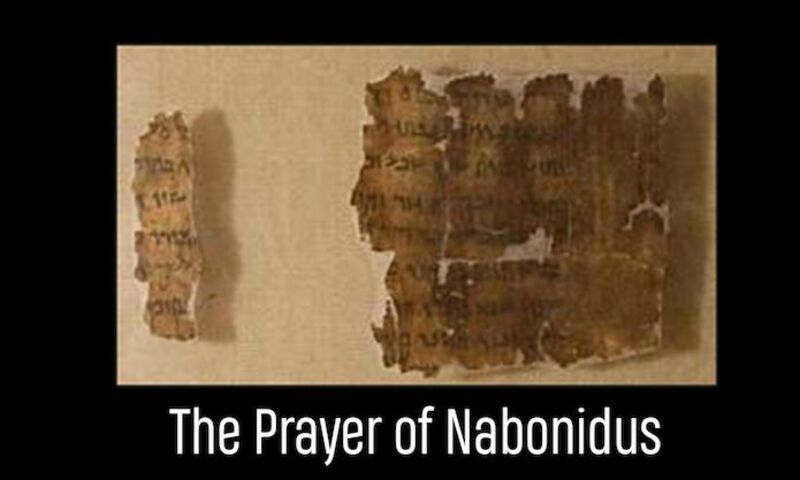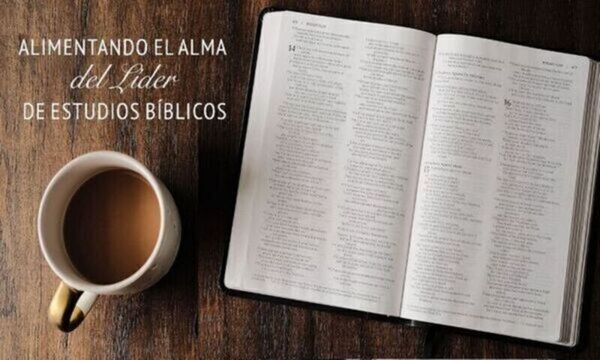This is the third post in a series on who wrote the book of Daniel. Here you can find Part 1 and Part 2.
From history, we know that Nabonidus was the last king of Babylon before the Medes and the Persians. But according to Daniel 5, Belshazzar was reigning in Babylon the night the kingdom passed to the Medes and the Persians. Until 1929, many scholars believed Belshazzar was a fictional character. In that year R. P. Dougherty published some ancient Babylonian documents that proved that Belshazzar was the son of Nabonidus and ruled Babylon while his father was gone for ten years in Tema in Arabia. The night of the banquet in Babylon when Daniel solved the mystery of the handwriting on the wall, Nabonidus was away fighting the forces of Cyrus. The invading Persians killed Belshazzar (Beaulieu, p. 231).
The Prayer of Nabonidus (PN) is the title of an Aramaic document found among the Dead Sea Scrolls. The text is fragmentary, but enough of the writing remains to reconstruct the basic details of the story. Nabonidus, writing in the first person, says that he suffered from a bad skin disease that God decreed for him. But God forgave his sins and healed him. For seven years, Nabonidus claimed, he had his skin disease while he was worshiping his gods of silver, gold, [bronze, iron], wood, stone, and clay. A Jewish diviner then urged him to give in writing praise and honor to ŌĆ£the name of [the Most High G]od.ŌĆØ
Many scholars have reasoned that the PN is an earlier version of an alleged legend regarding the madness of Nebuchadnezzar (Dan. 4). They point out similarities with the account of NebuchadnezzarŌĆÖs affliction as well as with DanielŌĆÖs dealings with Belshazzar (VanderKam, pp. 177ŌĆō178). The starting assumption for those scholars who argue that the PN served as a source for Daniel 4 is that the account of NebuchadnezzarŌĆÖs troubles is only a legendary tale.
The account of NebuchadnezzarŌĆÖs affliction is a straightforward narrative, but can it stand up to historical scrutiny? Eusebius (early 4th century) quoted Abydenus, a Greek historian, who quoted Megasthenes, a Greek geographer: ŌĆ£[Nebuchadnezzar] went up to his palace, and being possessed by some god or other uttered the following speech: ŌĆśO men of Babylon, I Nebuchadnezzar here foretell to you the coming calamity ŌĆ”. There will come a Persian mule, aided by the alliance of your own deities, and will bring you into slavery. ŌĆ”ŌĆÖ He after uttering this prediction had immediately disappeared, and his son Amil-marudocus [Evil-merodach] became kingŌĆØ (Eusebius, 9.41.6). This tradition shares several features with the biblical account. Nebuchadnezzar uttered the words from his palace; he disappeared from public view immediately following his pronouncement; and he spoke in the first person. The reference to Evil-merodach affords a plausible scenario for what happened to the kingdom while Nebuchadnezzar was incapacitated ŌĆö his son took it over until his fatherŌĆÖs sanity was restored. A fragmentary Babylonian text has a tantalizing reference to Nebuchadnezzar and Evil-merodach (Grayson, pp. 88ŌĆō89). The line translated ŌĆ£his life appeared of no value to [him]ŌĆØ must refer to Nebuchadnezzar. A few lines later it refers to someone who ŌĆ£does not show love to son and daughterŌĆØ and ŌĆ£his attention was not directed towards promoting the welfare of Esagil [and Babylon].ŌĆØ Grayson referred these descriptions to Evil-merodach, but Hasel (p. 42) thinks they might ŌĆ£refer to the strange behavior of Nebuchadnezzar during his time of mental incapacity ŌĆ”.ŌĆØ The poor preservation of the text makes it impossible to determine for certain which monarch was meant.
What about the things that happened to Nebuchadnezzar? Did he literally go into the open country and eat grass like animals? Hays (pp. 305ŌĆō325) refers to Babylonian and Assyrian materials for analogous references to divine judgment reported in images that refer to various animals and birds. ŌĆ£[D]emons and the dead are frequently portrayed with animal characteristics,ŌĆØ but also ŌĆ£the victim can begin to look like the dead even before he or she reaches the underworldŌĆØ (ibid. 318). Rain and storms also could describe the effect of evil spirits, and in the Bible, rain sometimes indicates suffering as well (Ezra 10:9, 13; Job 24:4ŌĆō8). Hays notes close parallels between Daniel 4:33 and the story of Ahiqar, which was widely known throughout the ancient Near East (ibid. 320ŌĆō323; cf. Tobit 1:21ŌĆō22; 2:10; 11:18; 14:10). When Ahiqar appeared before the king after he went into hiding, he recounted that ŌĆ£the hair of my head had grown down on my shoulders, and my body was foul with the dust, and my nails were grown long like an eagleŌĆÖsŌĆØ (p. 323).
Hays concludes that the descriptions of NebuchadnezzarŌĆÖs affliction are not ŌĆ£naturalisticŌĆØ but ŌĆ£impressionistic, poetic evocations of long traditions of prayer.ŌĆØ The images that depict the king living among the animals and taking on animal characteristics ŌĆ£express suffering, lending detail and poignancy to NebuchadnezzarŌĆÖs conditionŌĆØ (p. 324). Perhaps the judgments said to have come upon the king were viewed by the original readers as metaphorical for NebuchadnezzarŌĆÖs extreme suffering or even demon oppression. Harrison (pp. 1115ŌĆō1117), by way of contrast, gives a detailed description of a psychological malady that Nebuchadnezzar suffered. At a minimum, DanielŌĆÖs account implies that Nebuchadnezzar would be afflicted with an illness or with demons that would render him a social outcast until he recognized that his own reign over Babylon was at the behest of the Most High God. The account is not historically implausible.
Exactly how similar or different are Daniel and PN? There are some important differences. First, the kings were different: Nebuchadnezzar and Belshazzar in Daniel and Nabonidus in PN. Second, the maladies are different: NebuchadnezzarŌĆÖs apparent insanity or demonic oppression and NabonidusŌĆÖs skin ailment. Third, Daniel warned Nebuchadnezzar before God judged him, whereas the Jewish diviner told Nabonidus to give God glory after God had healed him. Fourth, Nabonidus confessed his worship of false gods for seven years, while NebuchadnezzarŌĆÖs pride led to his humiliation before God restored him. The major similarities include the seven periods of time (Daniel) or seven years (PN), the decree of God against a sinful Babylonian king, and a declaration of praise to God after the healing or restoration. Nabonidus was ŌĆ£struck by the decree of G[o]d,ŌĆØ whereas in NebuchadnezzarŌĆÖs dream the ŌĆ£decreeŌĆØ about him was by the ŌĆ£determination of holy watchers (angels)ŌĆØ (Dan. 4:17). Nabonidus professed to worshiping ŌĆ£gods of silver and gold, [bronze, iron], wood, stone, clay.ŌĆØ These idols were the same gods that Belshazzar worshiped at his banquet (Dan. 5:4). A Jewish ŌĆ£divinerŌĆØ either ŌĆ£forgaveŌĆØ NabonidusŌĆÖs sin or suggested to Nabonidus that he should write a decree praising the God who forgave his sin. The term for ŌĆ£divinerŌĆØ in Daniel (2:27; 4:7; 5:7) refers to a category of NebuchadnezzarŌĆÖs or BelshazzarŌĆÖs wise men who could not solve the mystery of the respective king. BelshazzarŌĆÖs mother encouraged him to consult Daniel, whom ŌĆ£Nebuchadnezzar your father appointed chief of the magicians, conjurers, Chaldeans, and divinersŌĆØ (Dan. 5:11). Otherwise, Daniel is never called a ŌĆ£diviner.ŌĆØ
Nabonidus was the father of Belshazzar, but the Queen Mother called Nebuchadnezzar BelshazzarŌĆÖs father. The consensus of the medieval period was that Belshazzar was Evil-MerodachŌĆÖs son, based on Jeremiah 27:7 (Goldwurm, p. 156; cf. Jerome, p. 55). In the absence of additional information that was a reasonable guess, but the evidence of texts in Babylonian cuneiform that were contemporary with Belshazzar and Nabonidus confirms their relationship. If one interprets Jeremiah 27:7 literally, then it could refer to Evil-Merodach, the son of Nebuchadnezzar, and to Belshazzar if he was in fact the grandson of Nebuchadnezzar (Feinberg, p. 544). Lundbom (p. 316), though, argues that the third generation did not mean a literal son and grandson but only three generations in general.
Dougherty (pp. 39ŌĆō66) reasoned that a statement in Herodotus showed that Nabonidus was married to Nitocris, a daughter of Nebuchadnezzar by an Egyptian princess and that Belshazzar was, therefore, the grandson of Nebuchadnezzar. As Aramaic bar can mean grandson as well as son, a literal meaning can be given to BelshazzarŌĆÖs relationship to Nebuchadnezzar as his grandson (cf. Wiseman, pp. 10ŌĆō12). Likewise ŌĆśa▓· (father) sometimes means grandfather or ancestor. Some have questioned the accuracy of Herodotus in the matter and opt for a second explanation, namely that ŌĆśa▓· means predecessor and bar means successor (Steinmann, pp. 261ŌĆō263). That the queen mother referred to BelshazzarŌĆÖs ŌĆ£fatherŌĆØ three times (v. 11) makes the explanation that Belshazzar was NebuchadnezzarŌĆÖs grandson more likely. There is no clear extra-biblical evidence, however, to support that relationship.
The name Nabonidus does not occur anywhere in the Bible or related writings, and even ancient historians such as Herodotus and Xenophon gave confusing information about Nabonidus. Also, they knew nothing of Belshazzar. With so little known about Nabonidus and Belshazzar, why is so much attention paid to them in the book of Daniel and in the PN?
For Daniel, the Babylonian kingdom had a significant part in the scheme of four world powers that would rule until the everlasting kingdom of God overtook them. BelshazzarŌĆÖs presence at the final banquet was significant for the encounter that Daniel had with him. Since Nabonidus was off fighting the Persians, Belshazzar represented the last sitting monarch of the Babylonian kingdom.
Possibly there is an Idumean/Nabatean background to the PN. It is probable that Nabonidus destroyed the kingdom of Edom in the sixth century B.C. and replaced the king with a Babylonian governor (Bartlett, 2:293). Traditions of this king who decimated Edom even as Nebuchadnezzar decimated Judah could have survived among the Idumeans or Nabateans. The assimilation to elements from the book of Daniel could then have occurred among the Jewish population in Arabia and Edom at that time. Complicating the issue is that in the PN, Tema in Arabia is spelled as Teman, the location of a region in the south of Edom. Steinmann gives another view of the relationship between Daniel 4 and PN. He sees the PN as composed by a Palestinian Jew to supplement the historical gap between Daniel 5 and Daniel 4, with the PN ŌĆ£based on the plot of Daniel 4.ŌĆØ
In conclusion, there is a relationship between the Prayer of Nabonidus and DanielŌĆÖs account of Nebuchadnezzar and Belshazzar, but that relationship went from Daniel to the PN. DanielŌĆÖs account is older by anyoneŌĆÖs dating of the book, and it sticks more closely to images of illness found in the Ancient Near East. Viewing the Prayer as more ancient than Daniel entails a questionable assumption of the transfer of legendary characteristics of a lesser-known figure to a more well-known figure. And that assumption does not account for the differences between the PN and Daniel 4.
Notes
Bartlett, John R. ŌĆ£Edom (Place).ŌĆØ Vol 2, pp. 287ŌĆō295 in Anchor Bible Dictionary, 6 vols. NY: Doubleday, 1992.
Beaulieu, Paul-Alain. The Reign of Nabonidus, King of Babylon, 556ŌĆō539 B.C. New Haven, CT: Yale University Press, 1989.
Dougherty, Raymond Philip. Nabonidus and Belshazzar: A Study of Closing Events of the Neo-Babylonian Empire. NY: AMS, 1980 [repr. of 1929 ed.].
Eusebius. Preparation for the Gospel, 2 vols. Transl. E. H. Gifford. Grand Rapids: Baker, 1981 [repr. of 1903 ed.].
Feinberg, Charles L. ŌĆ£Jeremiah.ŌĆØ In EBC 6. Grand Rapids: Zondervan, 1986.
Goldwurm, Hersh. Daniel: A New Translation with a Commentary Anthologized from Talmudic, Midrashic and Rabbinic Sources. 2nd ed. Brooklyn: Mesorah Publications, 1980.
Grayson, A. K. Assyrian and Babylonian Chronicles. Locust Valley, NY: J. J. Augustin, 1975.
Hasel, Gerhard F. ŌĆ£The Book of Daniel and Matters of Language: Evidences Relating to Names, Words, and the Aramaic Language.ŌĆØ Andrews University Seminary Studies 19:37ŌĆō49.
Hays, Christopher B. ŌĆ£Chirps from the Dust: The Affliction of Nebuchadnezzar in Daniel 4:30 in Its Ancient Near Eastern Context.ŌĆØ Journal of Biblical Literature 126:305ŌĆō325.
Herodotus. LCL 117ŌĆō120. Trans. A. D. Godley, Cambridge, MA: Harvard University Press. 1946ŌĆō1957.
Jerome. JeromeŌĆÖs Commentary on Daniel. Transl. Gleason Archer. Wipf & Stock, Eugene, OR, 2009.
Lundbom, Jack R. Jeremiah 21ŌĆō36. Anchor Bible 21B. NY: Doubleday, 2004.
Steinmann, Andrew E. Daniel. Saint Louis: Concordia, 2008.
VanderKam, James C. The Dead Sea Scrolls Today. 2nd ed. Grand Rapids: Eerdmans, 2010.
Wiseman, D. J. ŌĆ£Some Historical Problems in the Book of Daniel.ŌĆØ Pp. 9ŌĆō18 in Notes on Some Problems in the Book of Daniel. London: Tyndale Press.
Xenophon. Cyropaedia. Books 1ŌĆō8 (in 2 vols.). Transl. Walter Miller, LCL 5lŌĆō52. Harvard University Press, Cambridge, 1914.
 51┬▄└“
51┬▄└“

.jpg)
.jpg)
.jpg)
